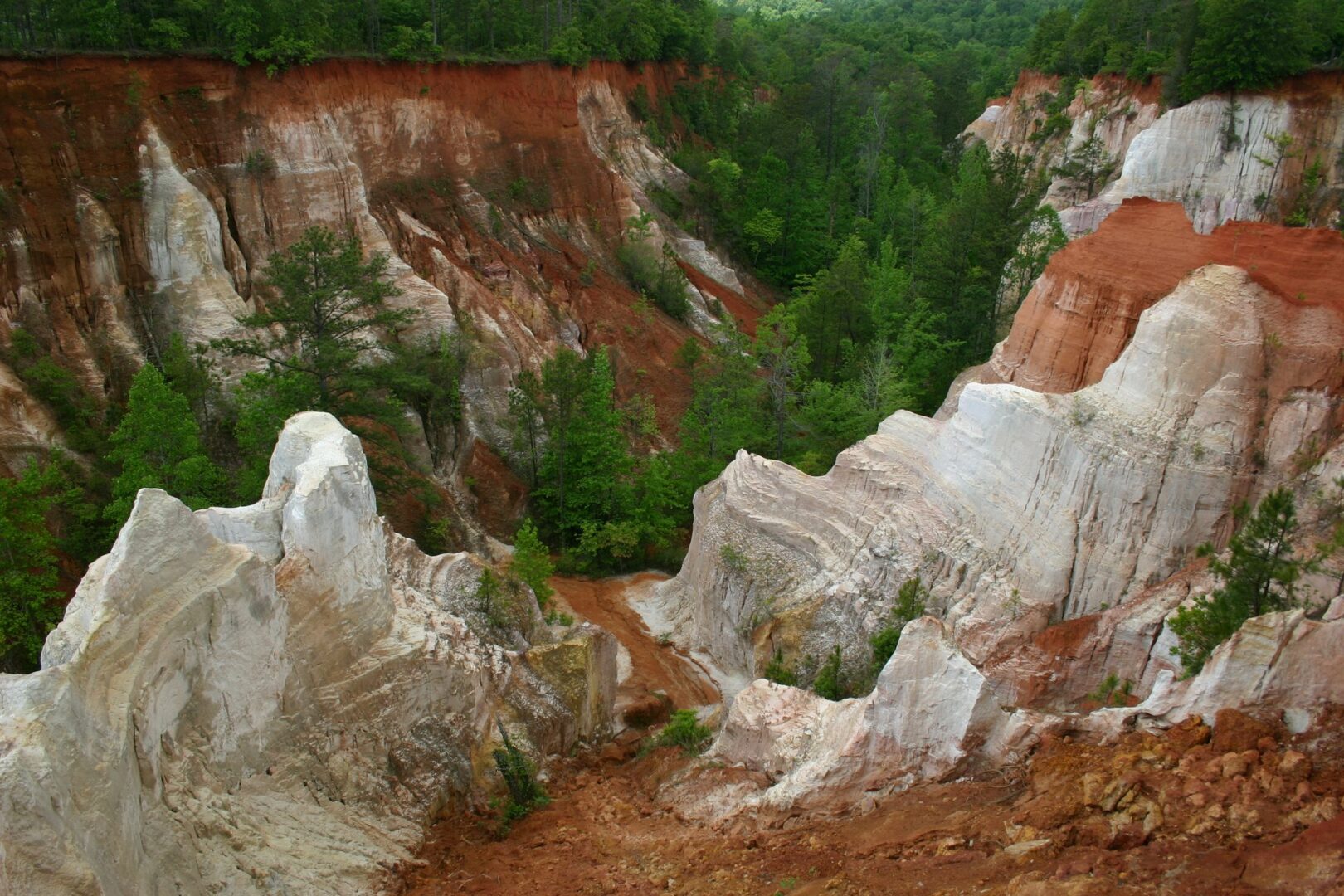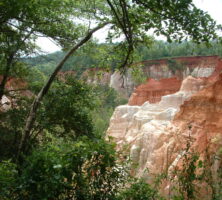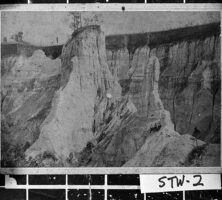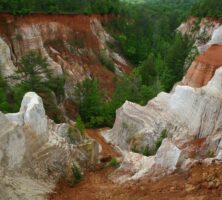Providence Canyon is a network of gorges in southwest Georgia created by the erosion of soft, multicolored soils. Often called “Georgia’s Little Grand Canyon,” Providence Canyon consists of several chasms, plateaus, cliffs, and pinnacles. Erosion has exposed the geologic record of several million years within its walls, and minerals have stained the sediments, creating a display of colors that range from white to various shades of pink, purple, red, brown, yellow, and black.

Courtesy of Matthew M. Moye
Identified by the Georgia Department of Natural Resources as one of the state’s “Seven Wonders,” the site is protected by Providence Canyon State Park, located approximately 150 miles southwest of Atlanta, in Stewart County. The 1,109-acre park includes 16 canyons, some as deep as 150 feet, all of which together make up the site known as Providence Canyon. From a trail along the rim, several overlooks offer views of the canyon walls, in which forty-three different colors of sands have been identified.
The rare plumleaf azalea ( Rhododendron prunifolium), found only in southwestern Georgia and eastern Alabama, blooms in Providence Canyon from mid to late summer, in the largest known wild colony of this species.
History
Although the appearance of Providence Canyon evokes comparisons to the landscape of the American Southwest, its history is unique. The canyon consists of huge gullies sculpted of soil, not by the action of a river or stream but by rainwater runoff from farm fields.
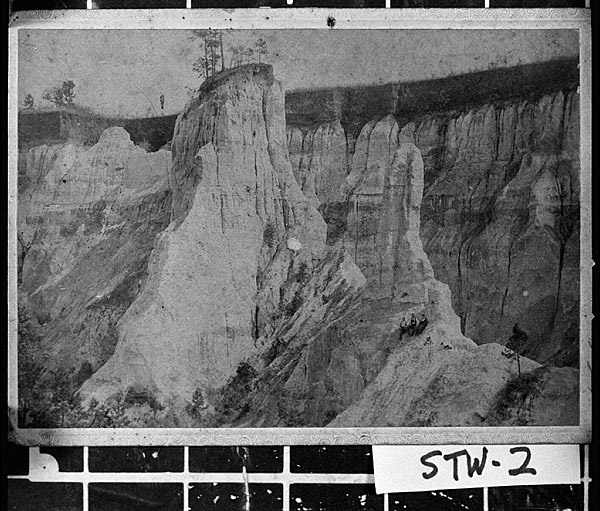
Courtesy of Georgia Archives.
Historical accounts indicate that the canyon began forming in the early 1800s as the result of poor soil-management practices. Native forest cover had been cleared so the land could be farmed, and early-nineteenth-century farmers in this region took no measures to avoid soil erosion. Small gullies formed and rapidly grew deeper and more extensive. By 1850 ditches three to five feet deep had been cut into the land, further concentrating runoff and increasing the rate of erosion.
Although the formation of Providence Canyon might be seen as the result of a distinct lack of providence, its name apparently came from Providence Methodist Church, established around 1832. A church building and a schoolhouse originally stood on land that now lies between the main gorges of the canyon. In 1859 a new church building was erected across the road from the canyon; it still stands and is occasionally used for special services.
Geology
Providence Canyon, which lies in the Coastal Plain region of Georgia, has been carved from unconsolidated sediments deposited by water in ancient streams, seas, deltas, and coastal beaches between 59 and 74 million years ago. Geologists separate the sediments forming the canyon into four major geologic formations: Baker Hill, Clayton, Providence, and Ripley.
The Baker Hill formation is the youngest and forms the uppermost part of soils in Providence Canyon State Park. Deposited about 59 to 62 million years ago during the Paleogene period, this formation does not appear in the canyon walls, but the entrance road to the park and the Interpretive Center lie on top of it.
The Clayton formation, visible in the top part of the canyon walls, also was deposited during the Paleogene period, about 63 to 65 million years ago, just after the age of the dinosaurs. Its fairly coarse sand is a reddish color, caused by the presence of iron oxide. Near the base of this formation, iron oxides have precipitated into a thin, dark layer of iron ore, which has been mined in some areas outside the park.
The Providence formation, also known as the Providence Sand, makes up most of the canyon walls. One hundred and nineteen feet thick, it was deposited during the Cretaceous period, about 67 to 70 million years ago. The upper layer of this formation consists of very fine sand mixed with a white clay called kaolin. The middle layer is coarser-grained and more colorful, with crossbeds stained yellow by limonite and purple by manganese. The lowest and oldest layer is a black and yellow mica-rich clay. This part of the formation is known as the Perote member and is visible near the bottom of the canyon.
The Ripley formation forms the canyon floor. Deposited during the Cretaceous period, about 70 to 74 million years ago, it is orange in color, and its composition varies from clay to a massively bedded sand. This formation is the richest of the layers in fossils, but it is poorly exposed and, in the park, mostly overgrown.
Providence Canyon continues to erode and change due to surface water runoff and the undercutting force of groundwater. The clay content of sediments in the floor of the canyon makes it more resistant, and the growth of pine trees, laurel bushes, and other vegetation helps to stabilize the soil, reducing the rate of vertical erosion. Lateral erosion, however, continues, and because of the soft nature of the upper soils, changes can happen very rapidly. Gorges grow larger, and the rim of the canyon often shows signs of crumbling and receding. Pinnacles gradually decrease in size and can disappear overnight in heavy rains.






